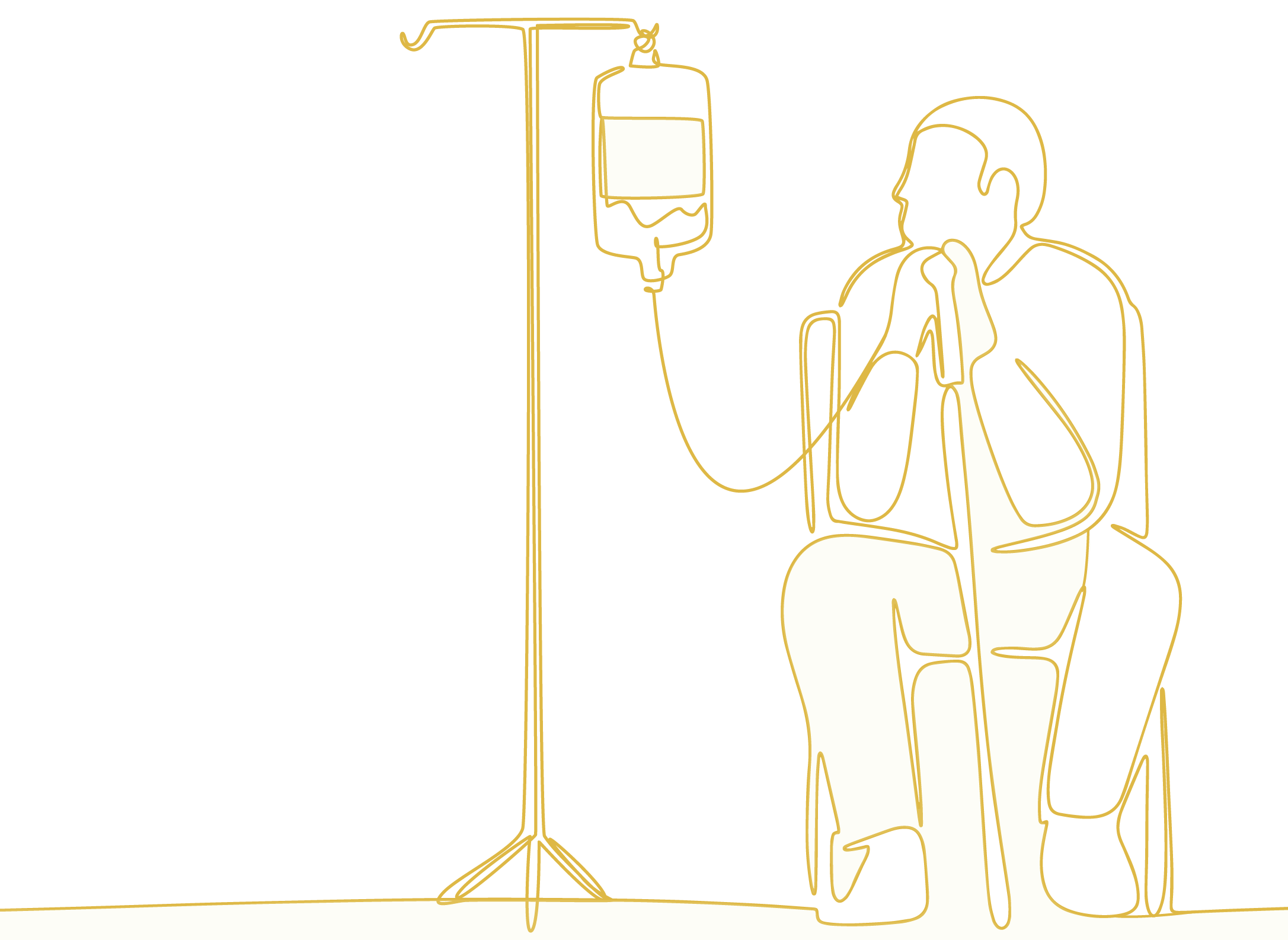Chemical, Biological, and Radiation Hazards
Chemical, biological, and radiation hazards can cause adverse health effects on staff. Physician employers must assess these hazards and take steps to eliminate or reduce the risks to ensure staff health and safety.

Chemical and Biological Hazards Requirements
-
Review Requirements
WorkSafeBC has specific regulations regarding chemical and biological hazards to ensure the safety and health of staff who may be exposed to these substances.
If a worker is, or may be exposed to chemical or biological agents, that could cause an adverse health effect, the employer must:
- Prepare and implement written procedures to eliminate or minimize exposure risk and address emergency and cleanup procedures for spills or releases.
- Ensure workers are trained in and follow measures for safe handling, use, storage, disposal, and emergency procedures.
Personal Protective Equipment (PPE)
-
Develop and Implement Policy and Procedures
Personal Protective Equipment (PPE) is vital for protecting clinic staff from exposure to workplace hazards such as infectious diseases, chemicals, and physical injuries. Employers are required to assess risks and train staff on the correct selection, use, and maintenance of PPE. This template can help you establish the PPE policy and procedures for your clinic.
Workplace Hazardous Materials Information System (WHMIS)
-
Review Requirements
Hazardous materials are dangerous products that can cause fires, explosions, or health problems. They include flammable, reactive, or corrosive substances, as well as those that can lead to respiratory/skin/eye damage or irritation, sensitization, acute or long-term toxicity, organ damage, carcinogenicity, or biohazards.
Examples of hazardous products commonly found in medical clinics include liquid nitrogen, oxygen cylinders, fire extinguishers, cleaning and disinfecting agents, antiseptics, and specimen preservatives.
If hazardous products are used, stored, or handled in the clinic, the employer must establish and maintain an effective WHMIS program.
- All hazardous product containers in the workplace must have a supplier label.
- A Safety Data Sheet (SDS) for every hazardous material in the workplace must be readily accessible to workers, and each SDS must be updated every three years
- Staff are informed about the major hazards of the hazardous products in use in the workplace.
- Procedures are in place to minimize risk and ensure the safe use, storage, handling, and disposal of hazardous products in the workplace.
- All staff who handle or may be exposed to hazardous products, regardless of the amount, must obtain training to protect themselves. The Workplace Hazardous Materials Information System Provincial training course is available at no cost (refer to the Additional Resources section below).
Safe Work Practices
-
Liquid Nitrogen
If a worker may be exposed to a harmful chemical agent, the employer must implement written procedures to minimize risk and manage spills. Liquid nitrogen is a common hazardous chemical stored and used in medical clinics.
The template below can help you establish safe work practices for using liquid nitrogen. The poster below is designed to help clinic staff easily follow these practices. We recommend posting it in the area where liquid nitrogen is handled for quick reference.
Emergency Washing Requirements
-
Determine your Emergency Washing Requirements
Emergency washing facilities must be available in work areas where worker’s eyes or skin may be exposed to harmful, corrosive, or irritating materials.
definition tableHazard Level Definition Clinic Examples Very Hazardous Materials Materials classified as Corrosive to Metal, Skin Corrosion/Irritation (Category 1), Serious Eye Damage/Irritation (Category 1), Acute Toxicity (Categories 1 and 2), and Specific Target Organ Toxicity - Single Exposure (Category 1). - Formalin (Formaldehyde 10%) (Specific Target Organ Toxicity – category 1(Eye))
- Enzyclean II® (Eye Damage/Irritation – Category 1)
- Hydrogen Peroxide (Eye Damage/Irritation – Category 1)
- Glutaraldehyde (Eye Damage/Irritation – Category 1, Skin Corrosion/Irritation – Category 1B)
- Clorox® Bleach (Sodium Hypochlorite >5%) (Eye Damage/Irritation – Category 1, Skin Corrosion/Irritation – Category 1B)
Moderately Hazardous Materials Materials classified as Acute Toxicity (Category 3), Serious Eye Damage/Irritation (Categories 2 and 2A), and Specific Target Organ Toxicity — Single Exposure (Category 2). - Isopropyl Alcohol (Eye Damage/Irritation – Category 2)
- Chlorhexidine (Eye Irritation – Category 2)
- Organisol® (Eye Damage/Irritation – Category 2A, Skin corrosion/Irritation – Category 2)
- Cavicide® (Eye Damage/Irritation – Category 2B)
- T³6 Disinfex TM (Eye Damage/Irritation – Category 2A)
- Ammonium Chloride (Eye Damage/Irritation – Category 2)
- Clorox® (Sodium Hypochlorite <5%) (Eye Damage/Irritation – Category 2A)
Low Hazardous Materials Materials that may irritate skin or eyes due to physical, as opposed to their chemical, nature (e.g., particulates generated from grinding). N/A
Exposure Control Plan (ECP)
-
Develop and Implement a Plan
An Exposure Control Plan (ECP) is a documented strategy that outlines procedures to minimize workers’ exposure to hazardous materials or conditions in the workplace. When an ECP is required, employers must inform workers about the plan, provide training, and review and update it annually.
Chemical Hazards
Some chemicals used in medical clinics are classified as hazardous substances and have occupational exposure limits (e.g. formaldehyde, hydrogen peroxide, glutaraldehyde). If workers are or may be overexposed to these chemicals (exposure above 50% of their occupational exposure limits), the employer must also develop and implement an ECP.
Refer to WorkSafeBC’s Table of exposure limits for chemical and biological substances.
Biological Hazards
Due to their work, medical clinic staff are likely to have occupational exposure to biological agents that can cause adverse health effects in humans. WorkSafeBC classifies these agents as hazardous substances (biohazards), which include bacteria, viruses, fungi, parasites, and other microorganisms that cause disease, as well as biological toxins. For a list of biological hazards classified as hazardous substances, refer to WorkSafeBC.
Employers must offer hepatitis B vaccinations to all workers at risk of occupational exposure to bloodborne pathogens. They must also provide staff with safety-engineered needles to be used when clinically appropriate (i.e., will not compromise patient safety or the success of a specific medical procedure).
Any worker accidentally directly exposed to blood or body fluids (e.g., needlestick injury) should be assessed by a qualified health care professional for the risk of infection from HIV, HBV, and HCV, and provided with appropriate counselling and treatment. For an example of a percutaneous blood exposure involving a clinic staff member and the required occupational heat and safety procedure, refer to the Needlestick Injury module in Incident and Injury Reporting and Investigation topic.
As medical clinic staff are exposed to biohazards, the employer must develop and implement an Exposure Control Plan (ECP). This template can help you create a biohazard ECP for your clinic.
Hazardous Drugs
-
Review Requirements
A hazardous drug is one that has characteristics such as carcinogenicity, teratogenicity, genotoxicity, reproductive toxicity, or organ toxicity at low doses, or is identified as a hazardous drug by the National Institute for Occupational Safety and Health (NIOSH). Refer to NIOSH list of hazardous drugs.
If staff are, or may be, exposed to a hazardous drug, the employer must:
- Create a list of all hazardous drugs present in the workplace and make the list accessible to staff.
- Ensure a qualified person prepares a written risk assessment.
- Ensure a qualified person develops an exposure control plan (ECP).
Refer to the Additional Resources section below for WorkSafeBC’s Safe Work Practices for Handling Hazardous Drugs.
Radiation
-
Review Requirements
WorkSafeBC has regulations to protect workers from exposure to both ionizing and non-ionizing radiation.
If staff might be exposed to ionizing radiation (e.g., X-ray machine, CT scanner, mammogram) above 1 milliSievert (mSv) per year, the employer must:
- Create and implement an exposure control plan (ECP).
- Make the safe handling instructions accessible to workers in the work area or near the equipment.
- Ensure workers’ exposure is kept as low as reasonably achievable (ALARA).
- Provide the worker with a personal dosimeter and ensure its proper use.
- Inform staff about potential reproductive risks.
- Conduct radiation surveys according to acceptable standards or applicable safety codes and keep the records for at least 10 years.
Equipment producing ionizing or non-ionizing radiation, or ultrasonic energy must be installed, operated, and maintained according to acceptable standards. For non-ionizing radiation (e.g., MRI, infrared, ultrasound, radiofrequency, laser), the employer must ensure exposure remains within the recommended limits. Refer to WorkSafeBC for recommended standards.
-
Develop and Implement a Plan
If the clinic has ionizing radiation-emitting equipment, such as X-ray machines or CT scanners, staff may be exposed to radiation levels exceeding the action limit. Employers must develop and implement an exposure control plan (ECP) to mitigate risks. This template can help you create an Ionizing Radiation ECP for your clinic.
-
Additional Resources
Legal Requirements
OHS Regulation Part 5: Chemical Agents and Biological Agents
OHS Regulation Part 6: Biological Agents
GOOD INDUSTRY PRACTICE
Training
WHMIS Provincial Course (course# 6941)
Handbook
Controlling Exposure: Protecting Workers from Infectious Disease|WorkSafeBC
Information Sheet
Student WorkSafe Infosheet: Exposure to Biological Hazards
Safe Work Practices
WorkSafeBC Safe Work Practices for Handling Hazardous Drugs


